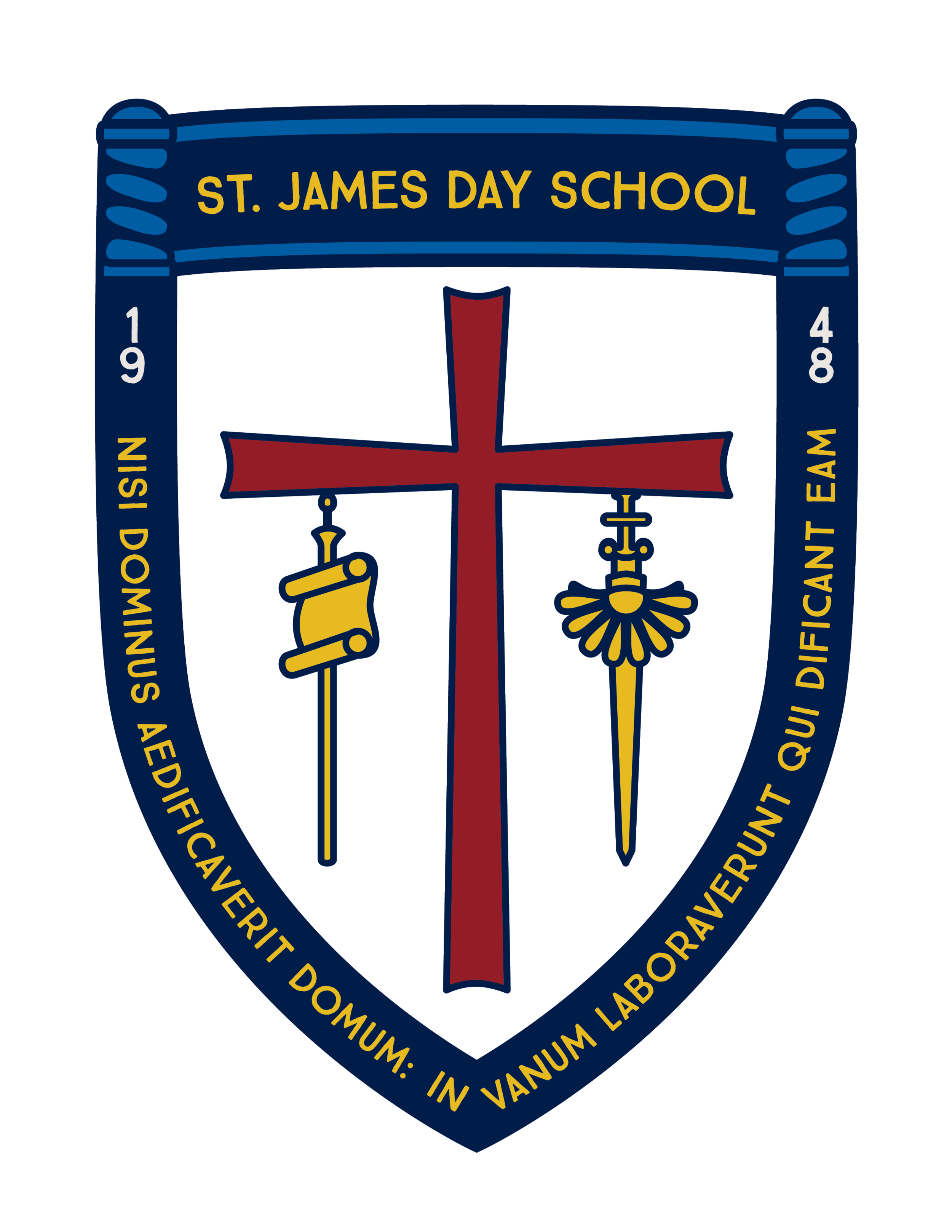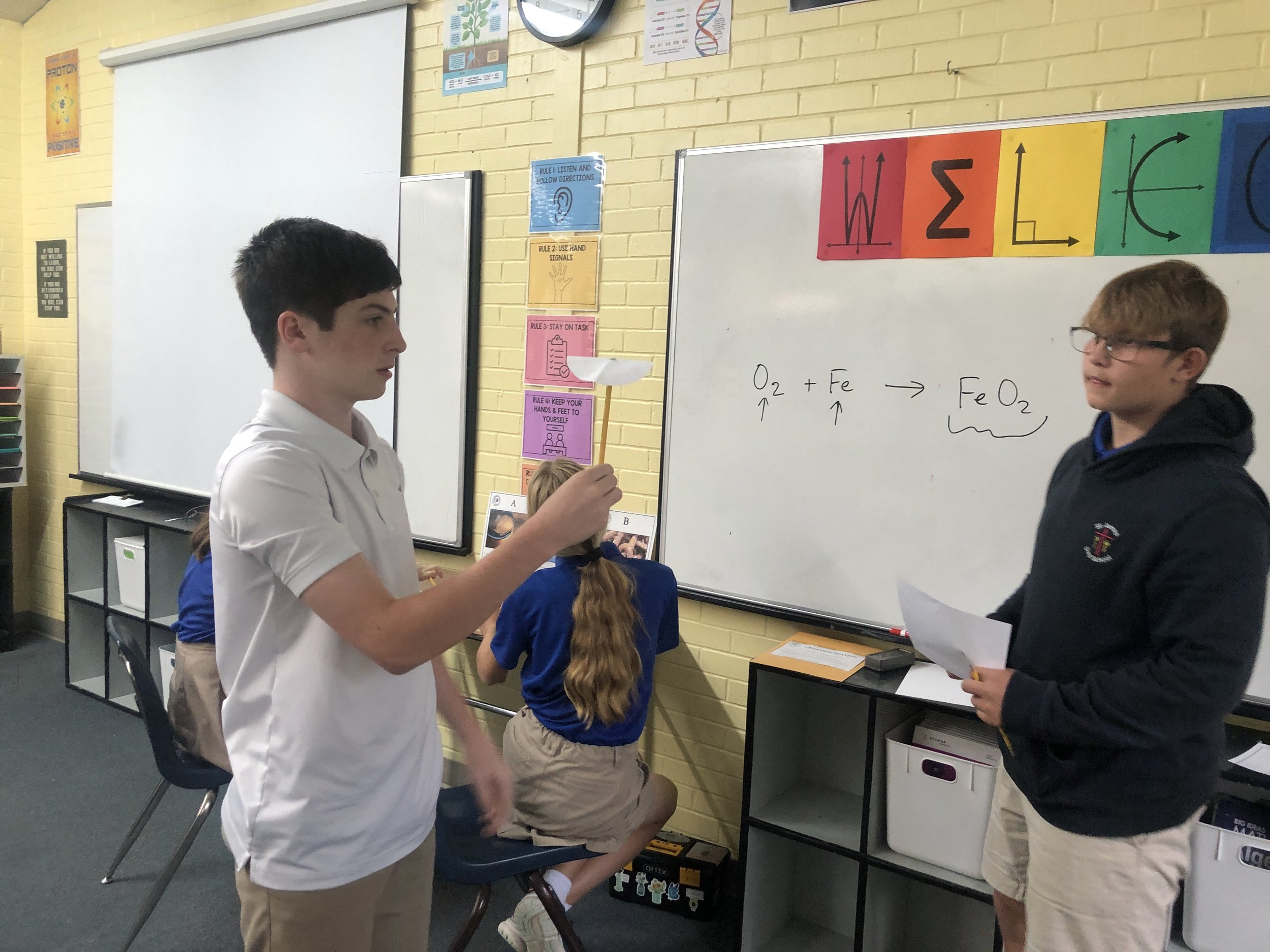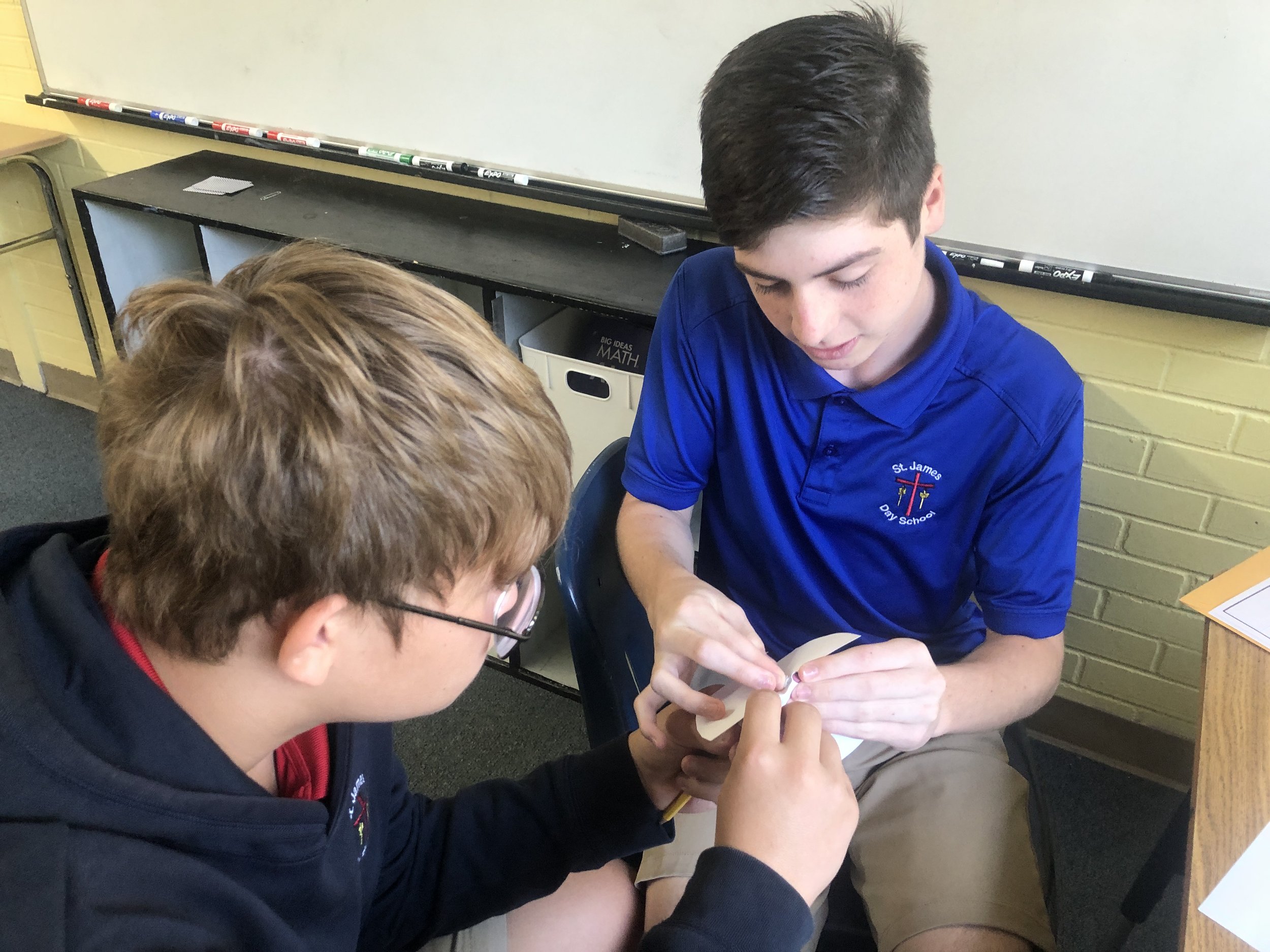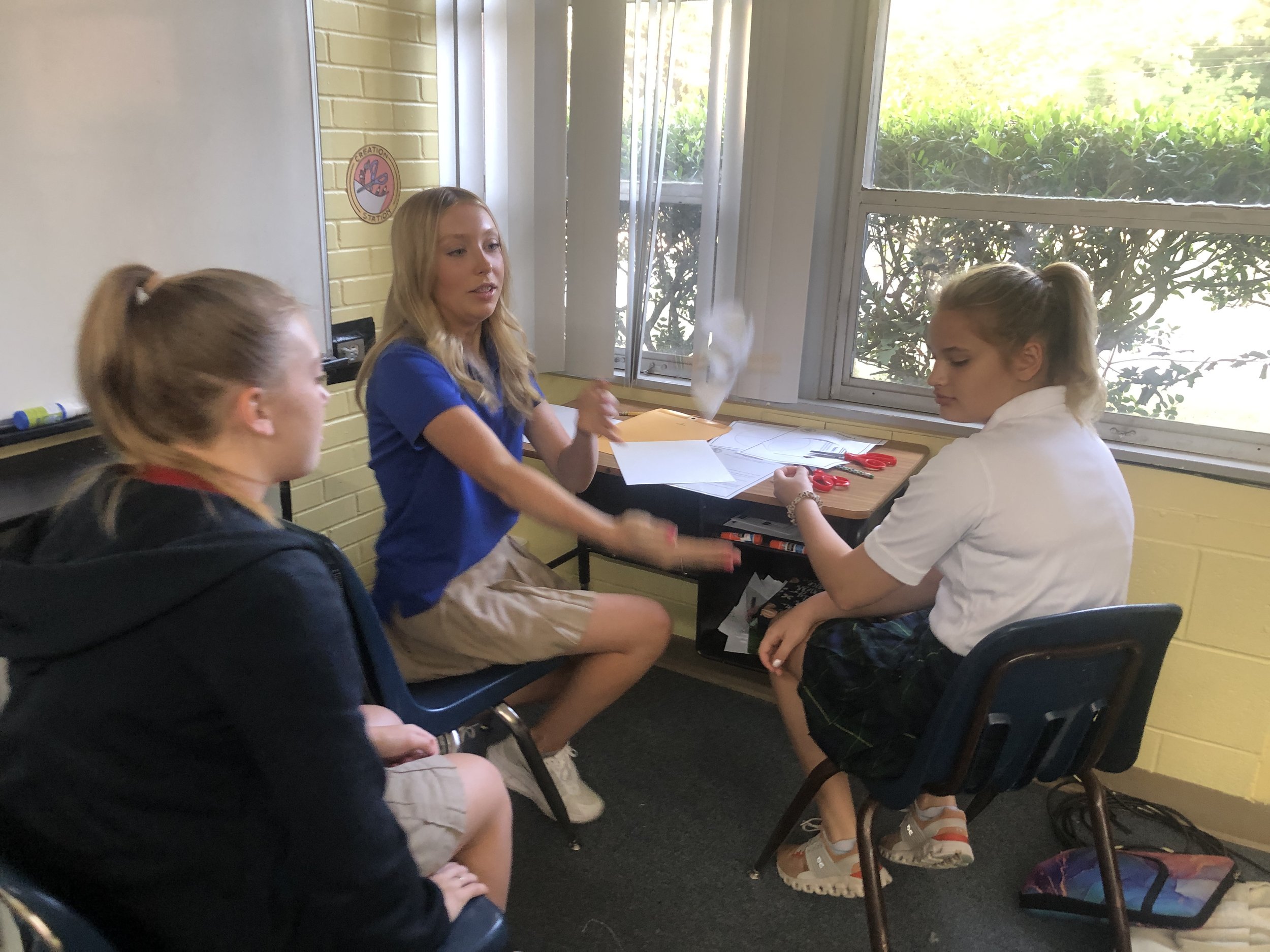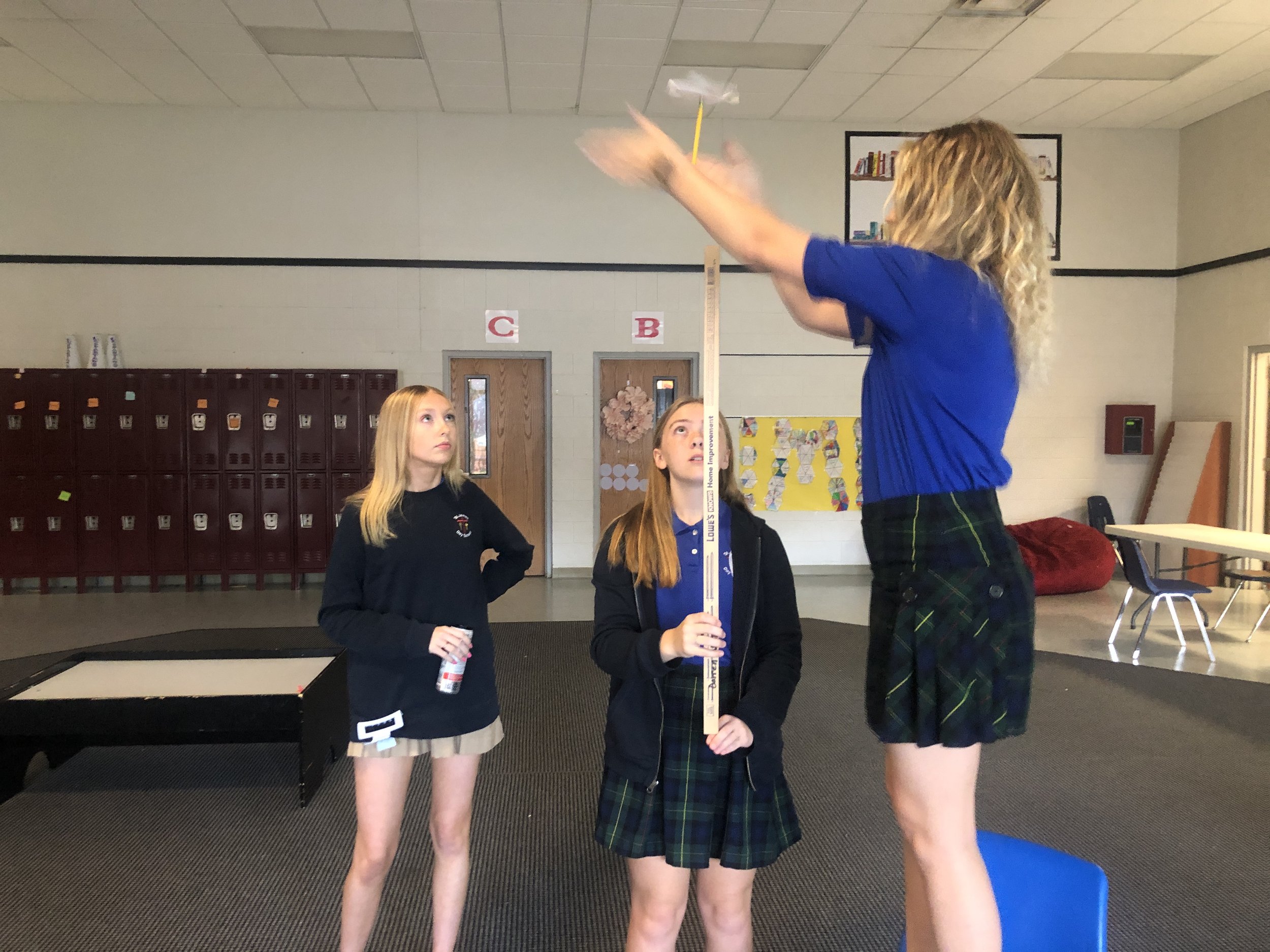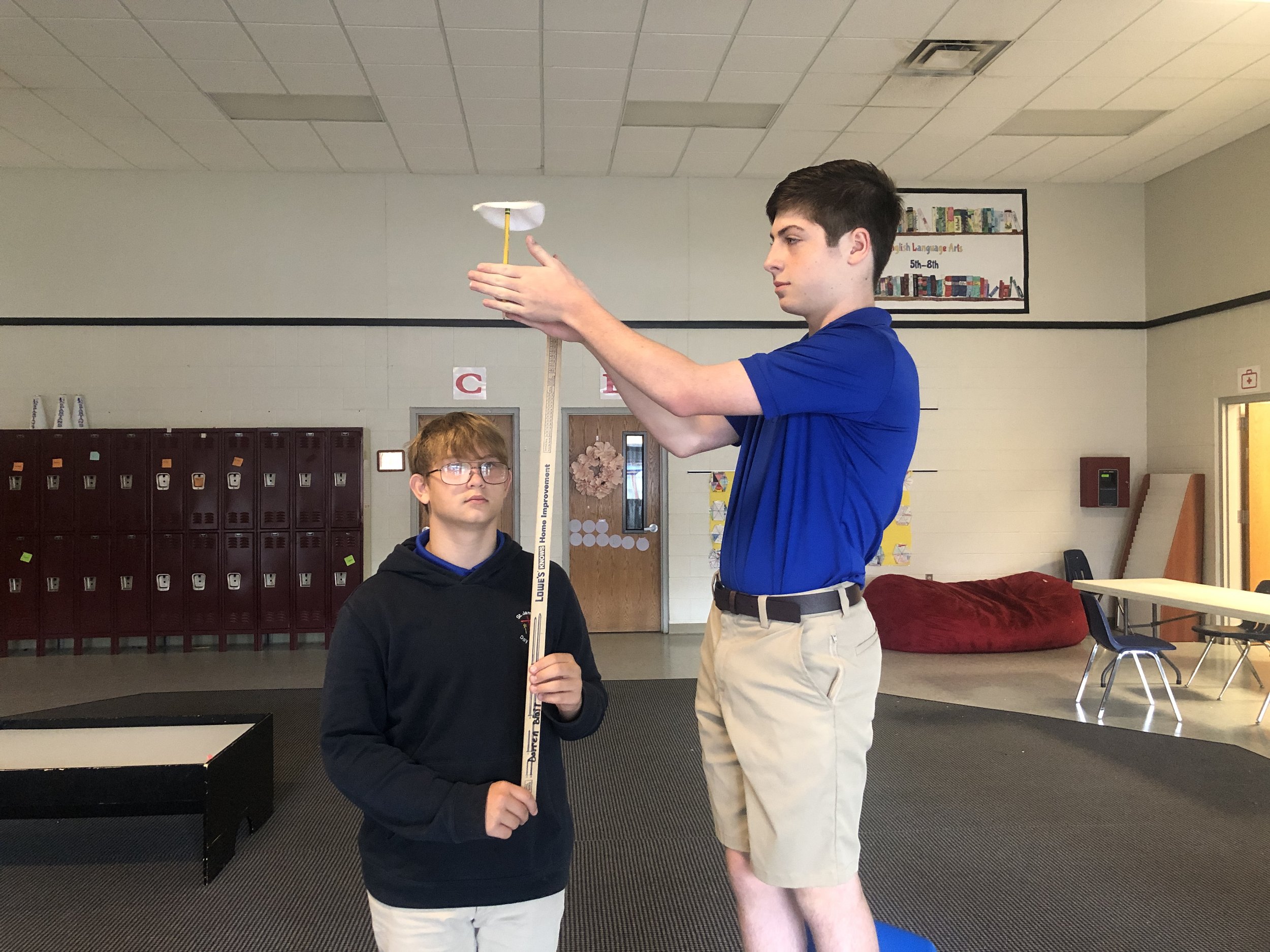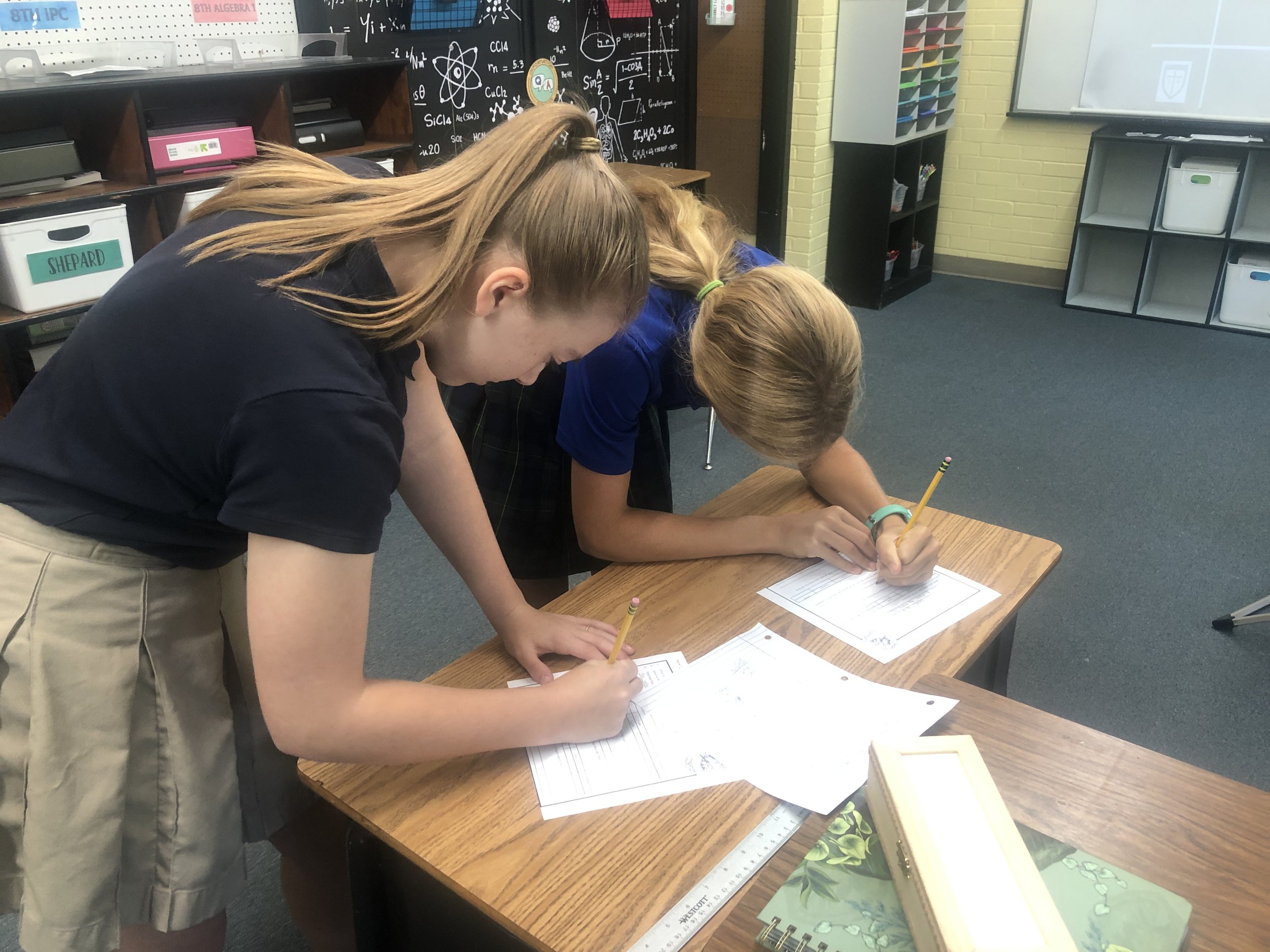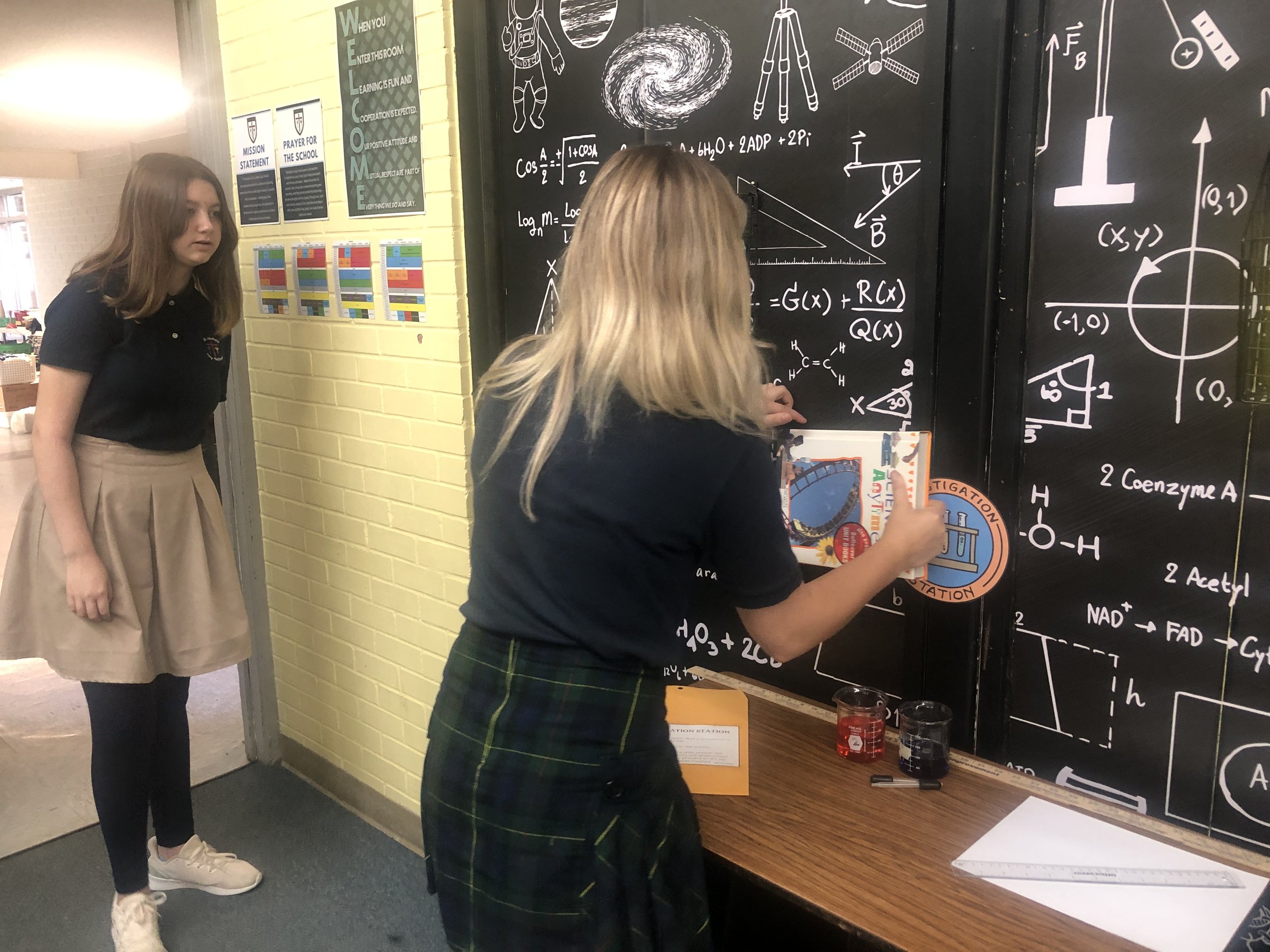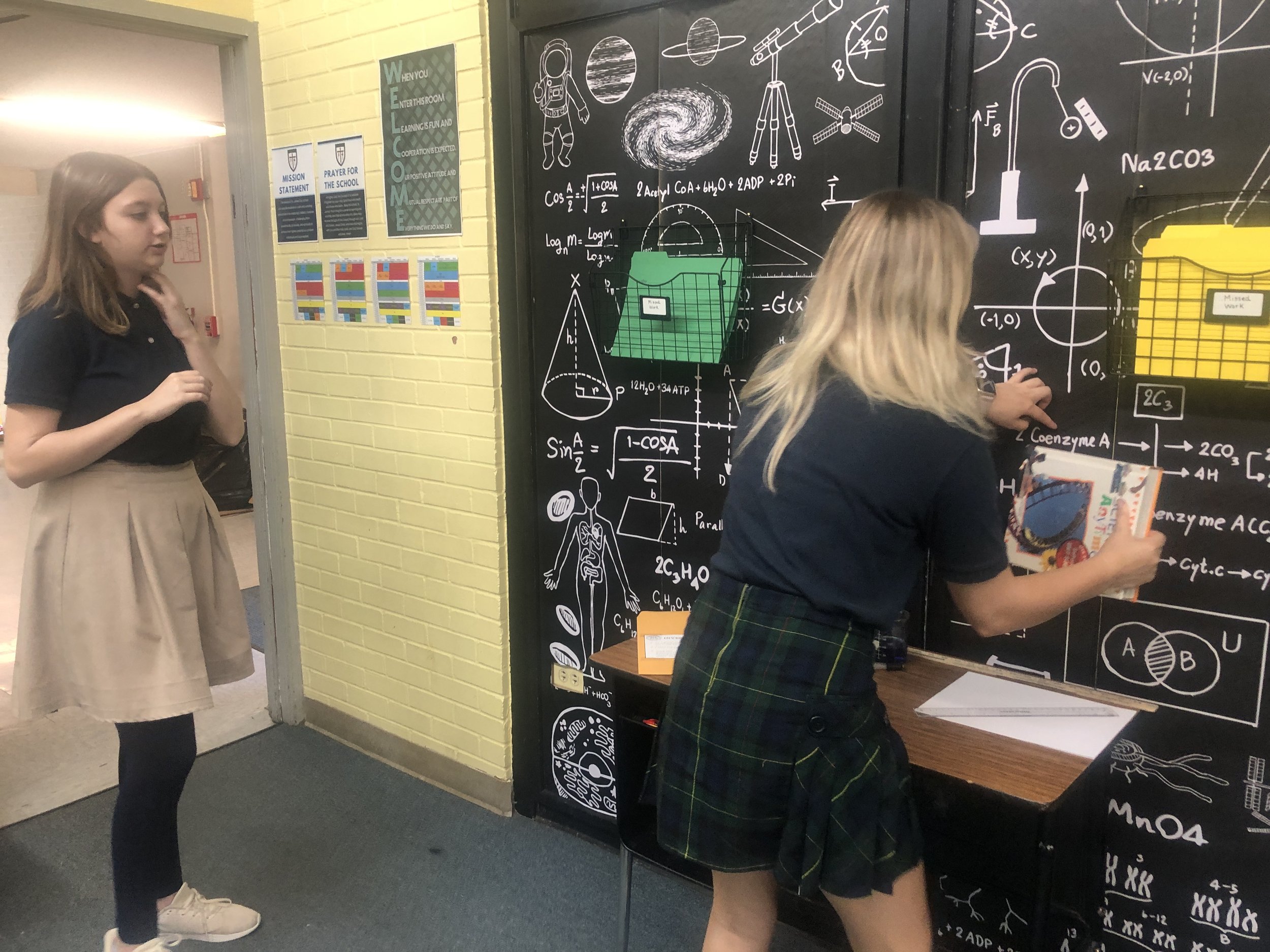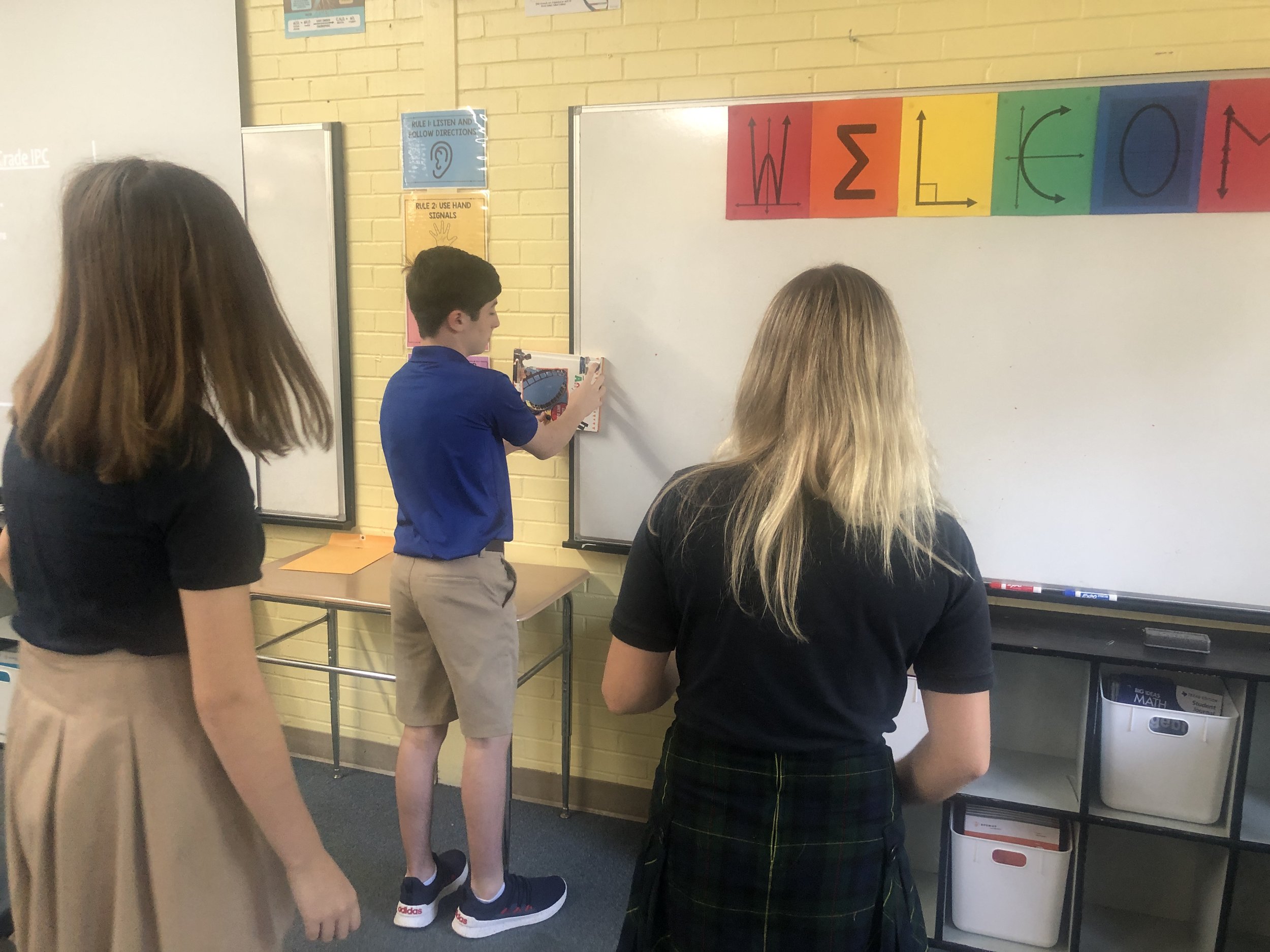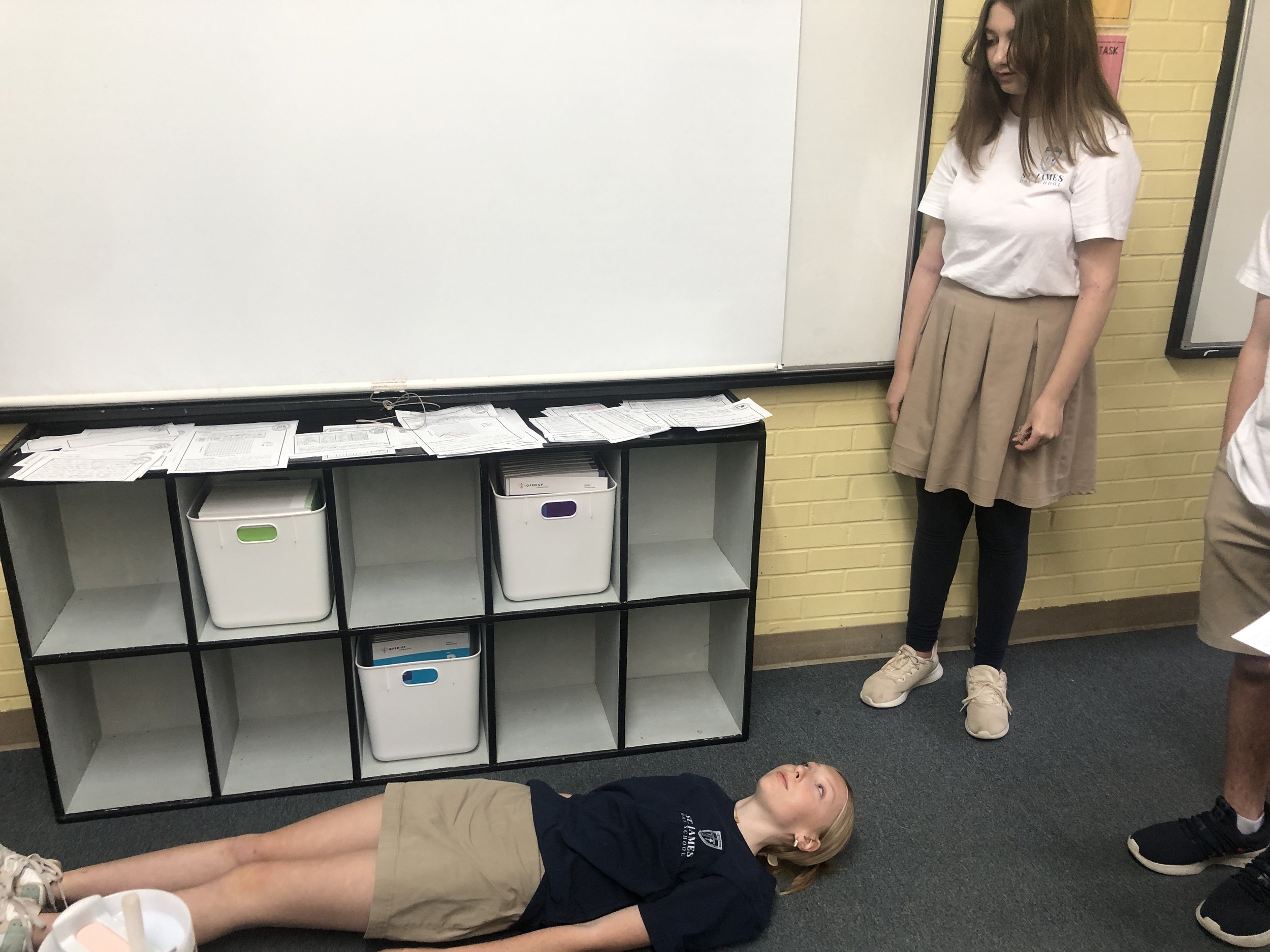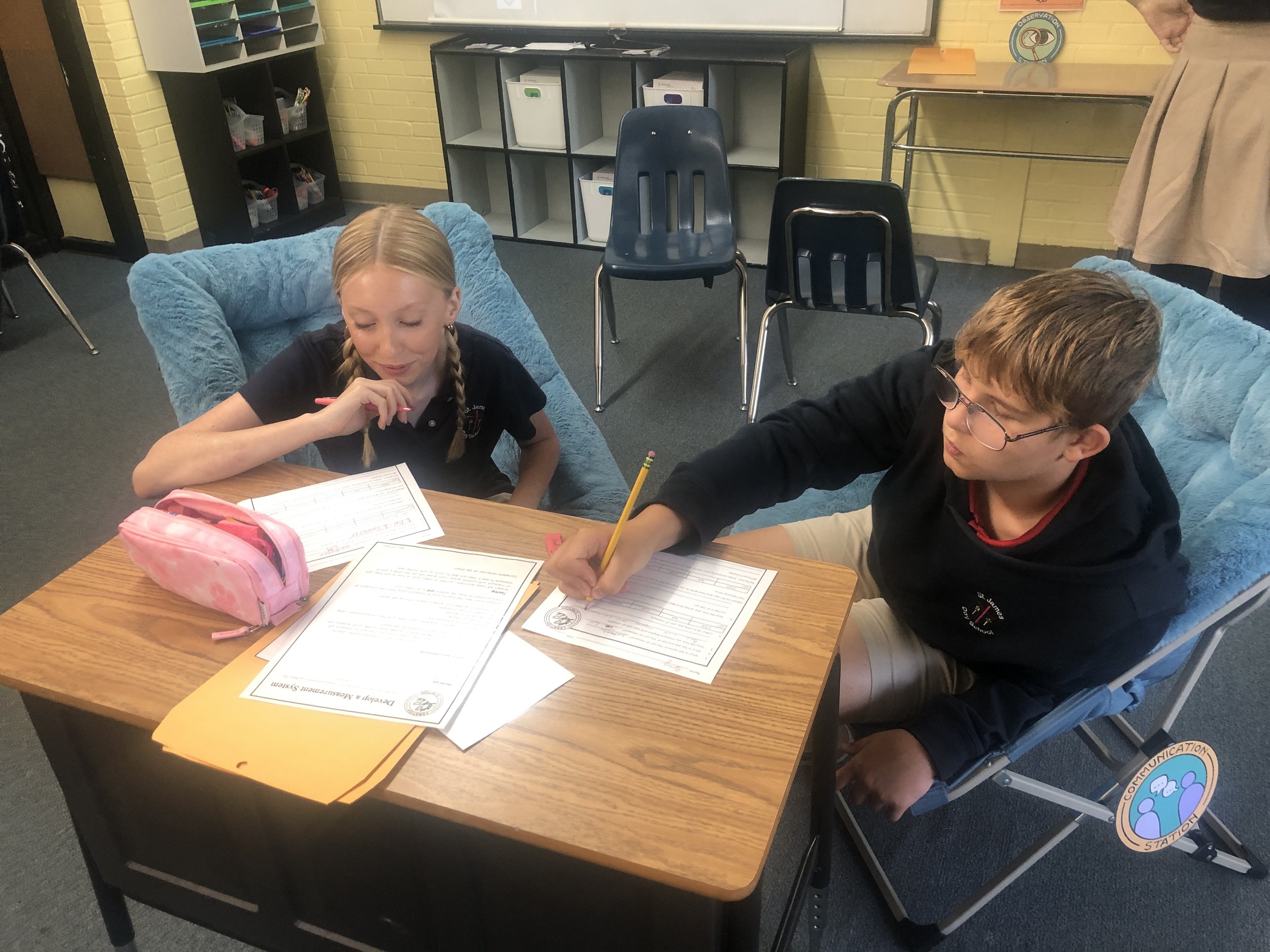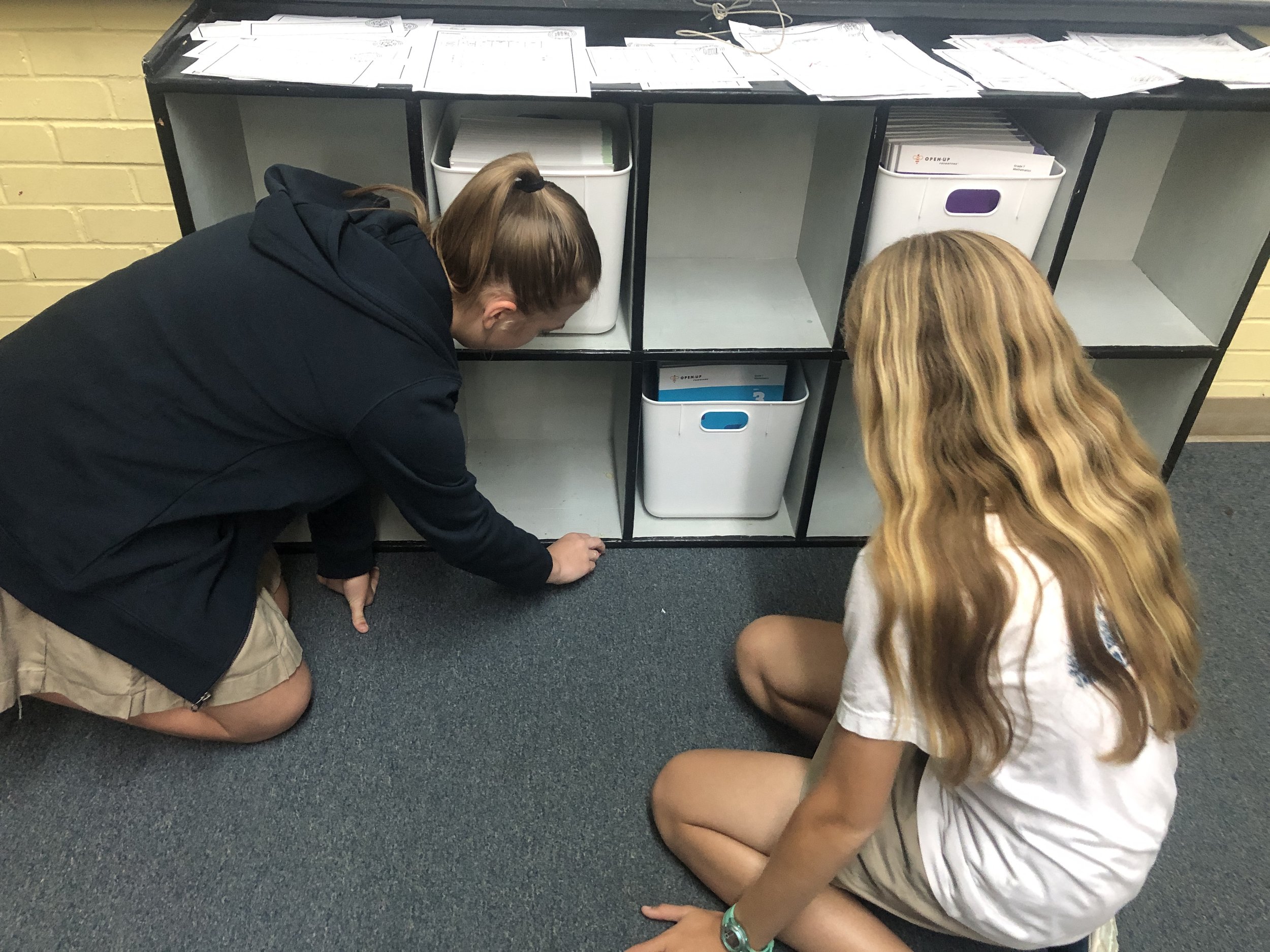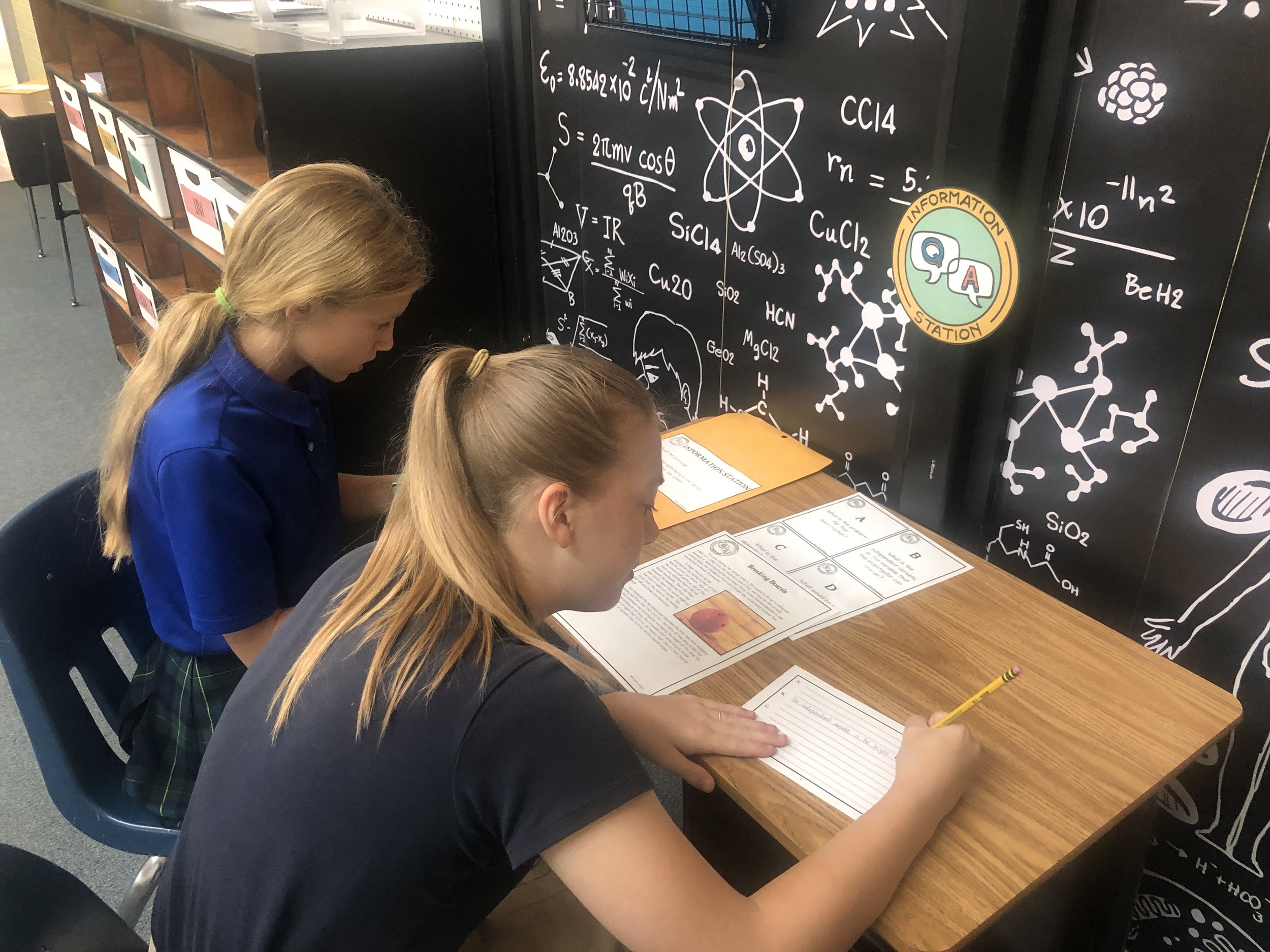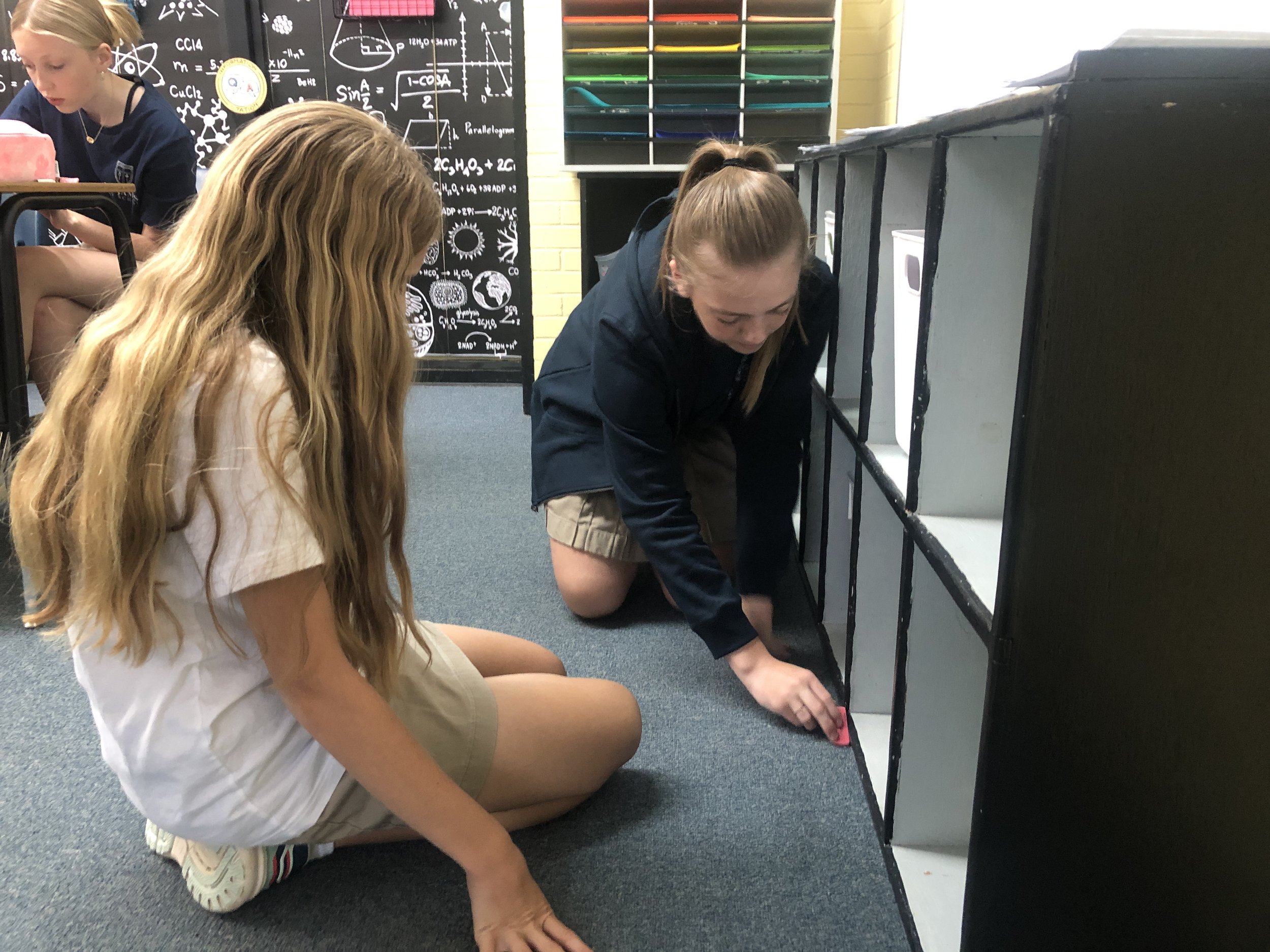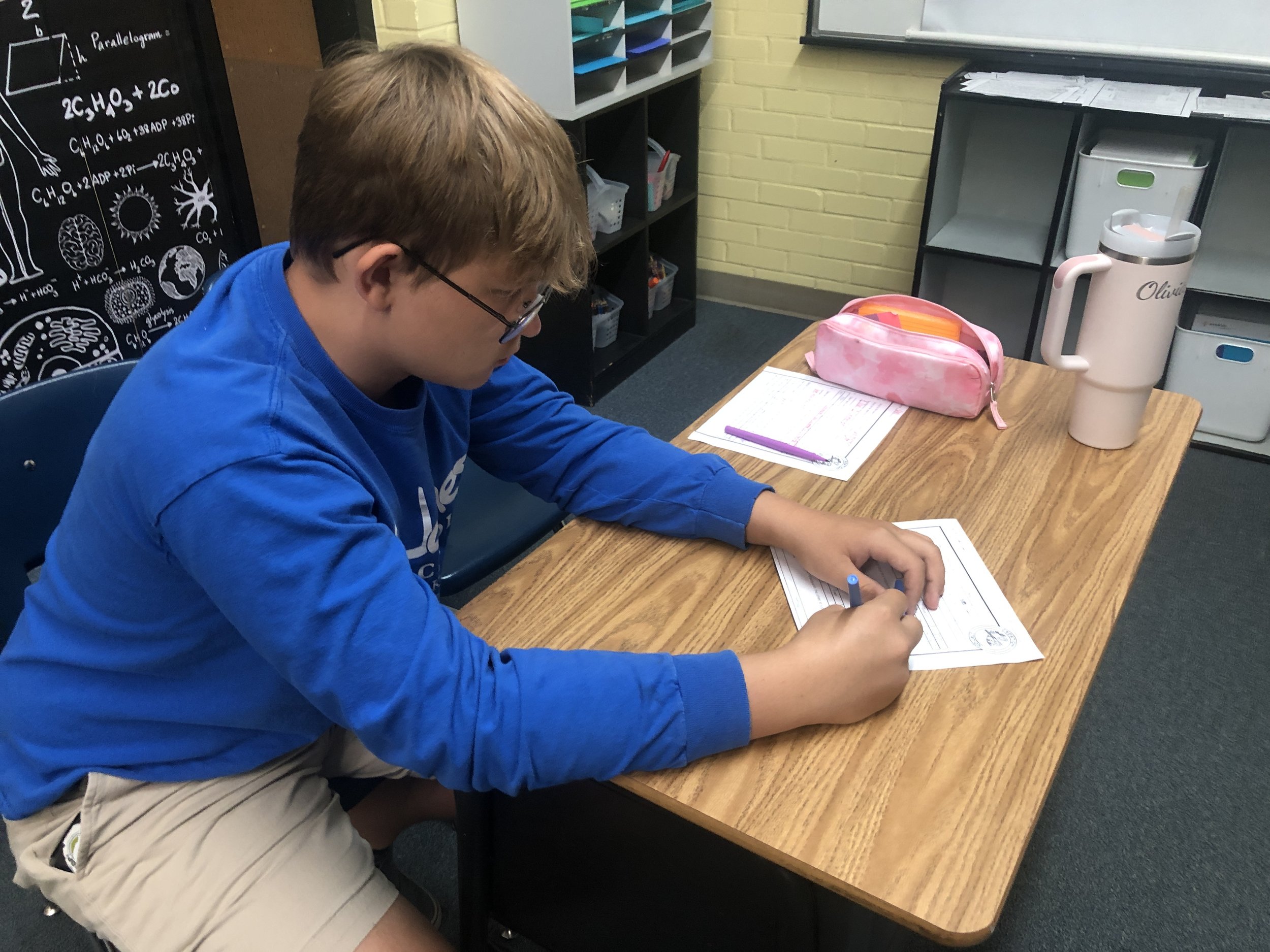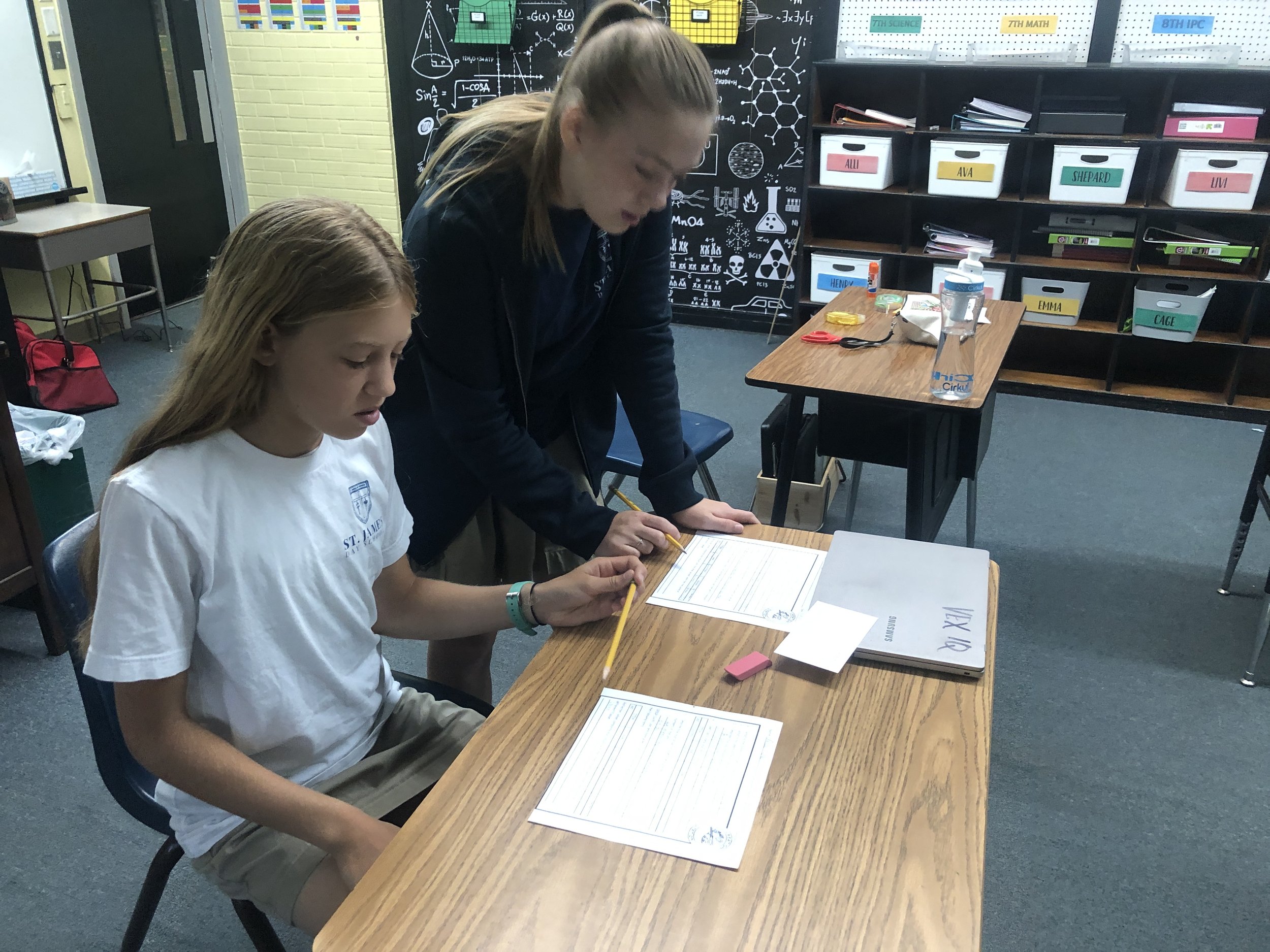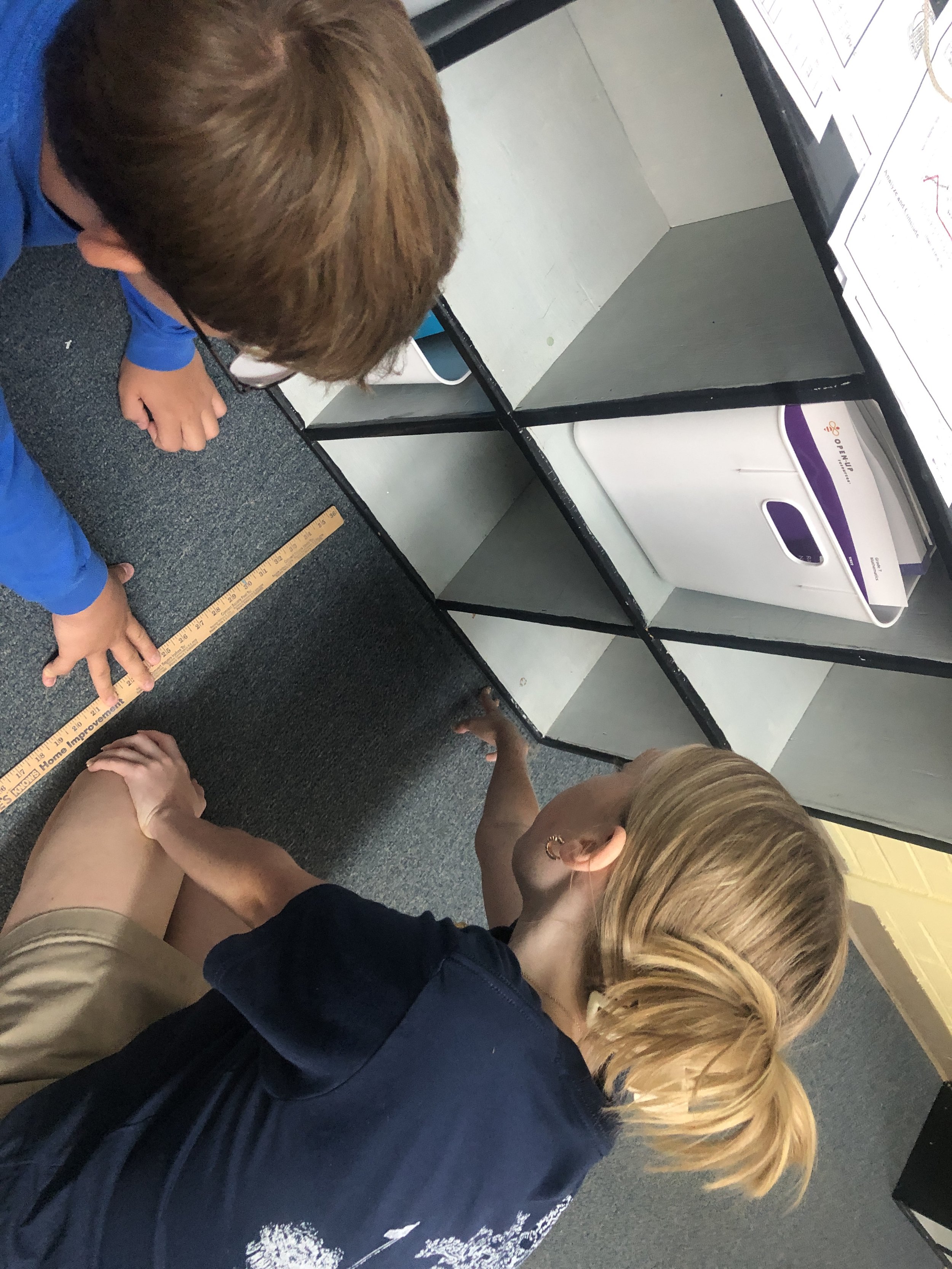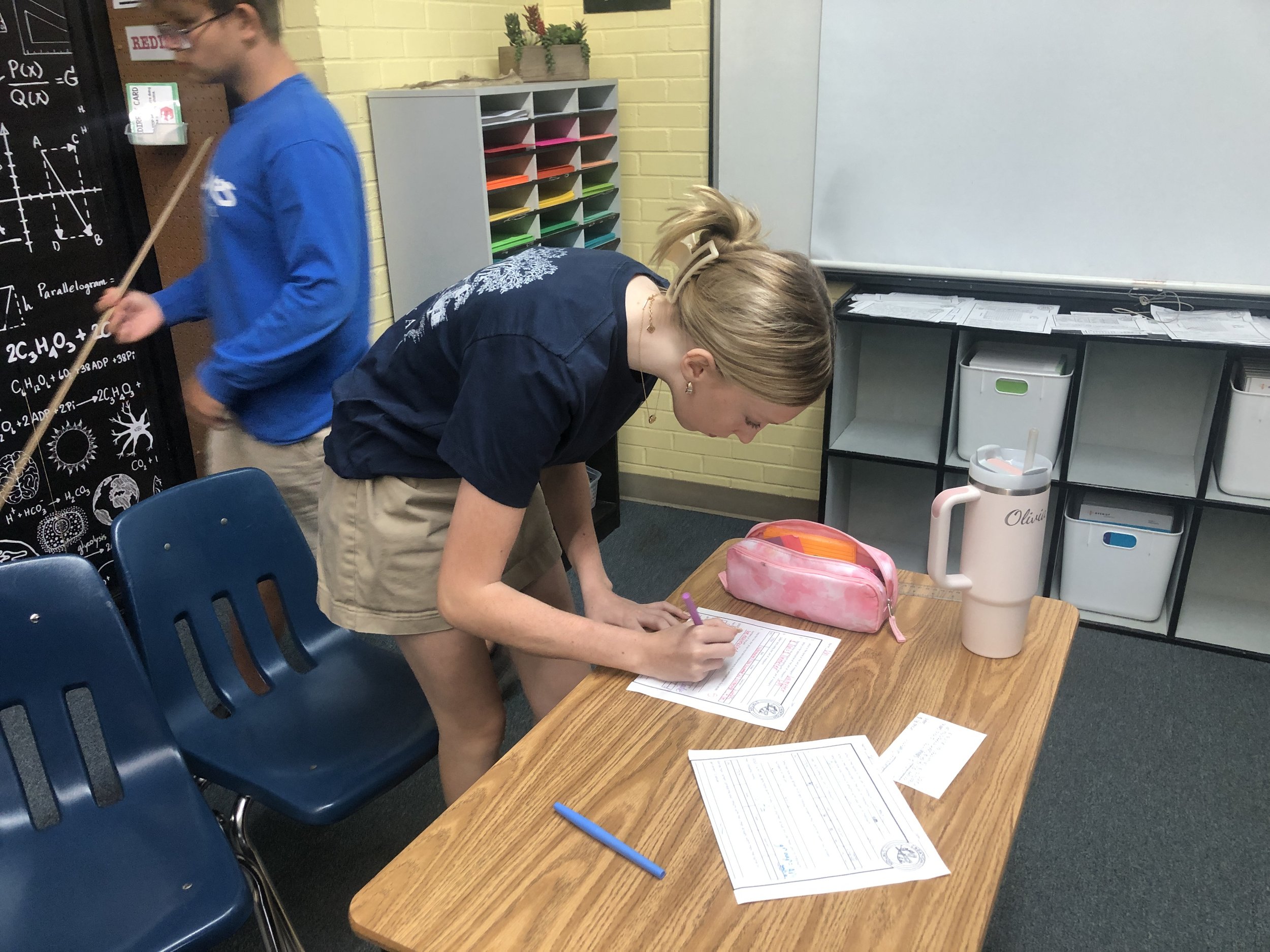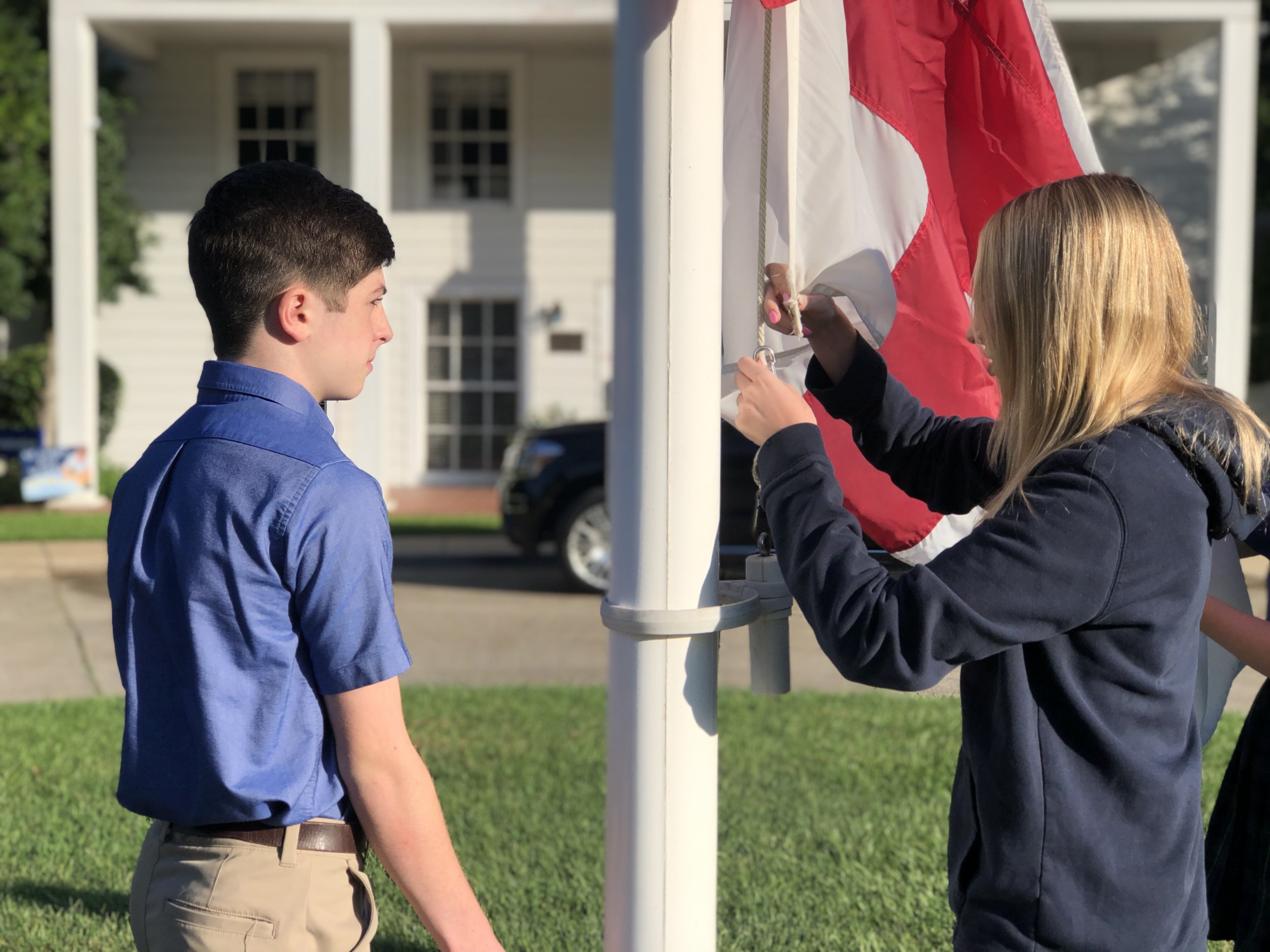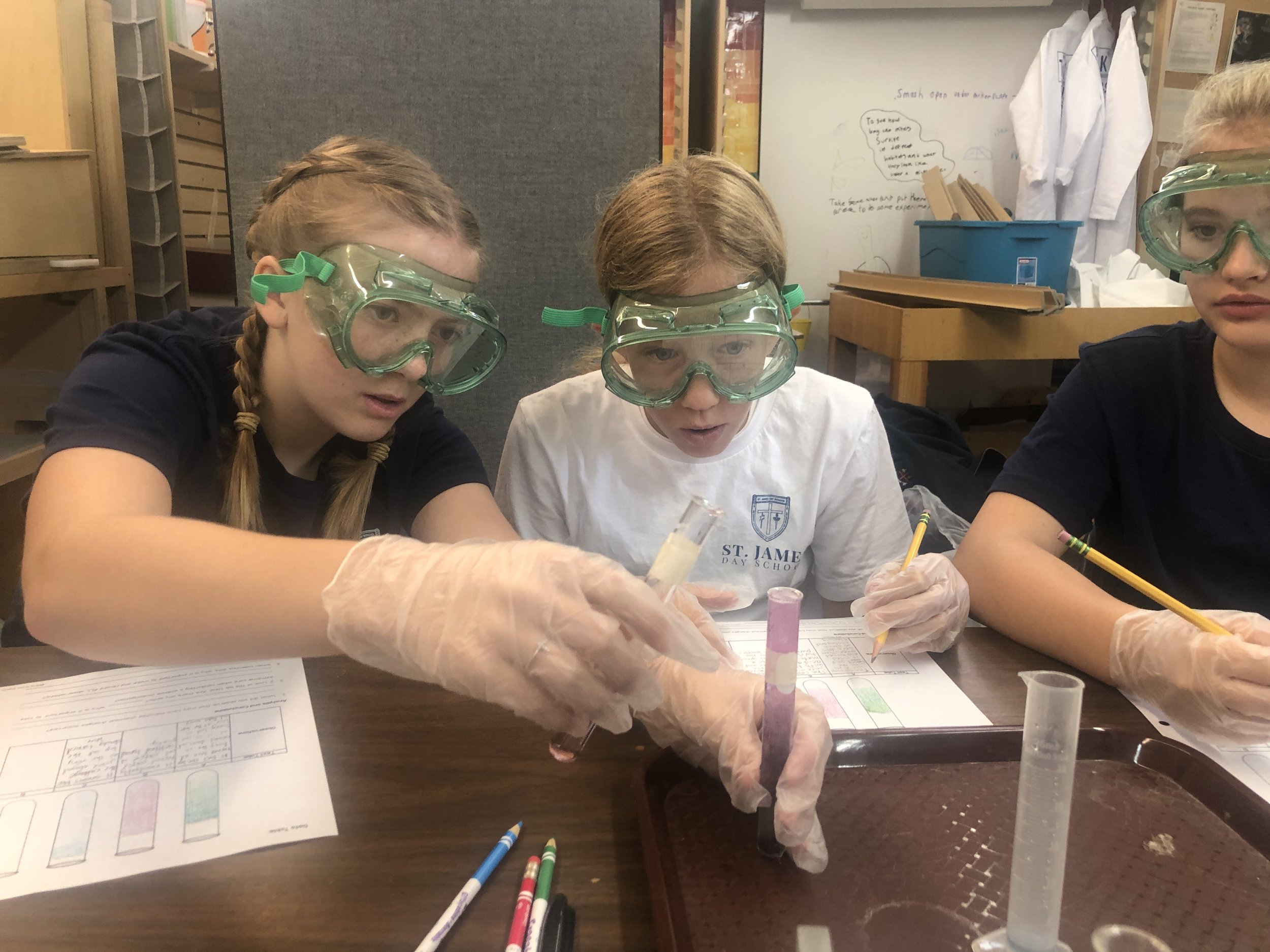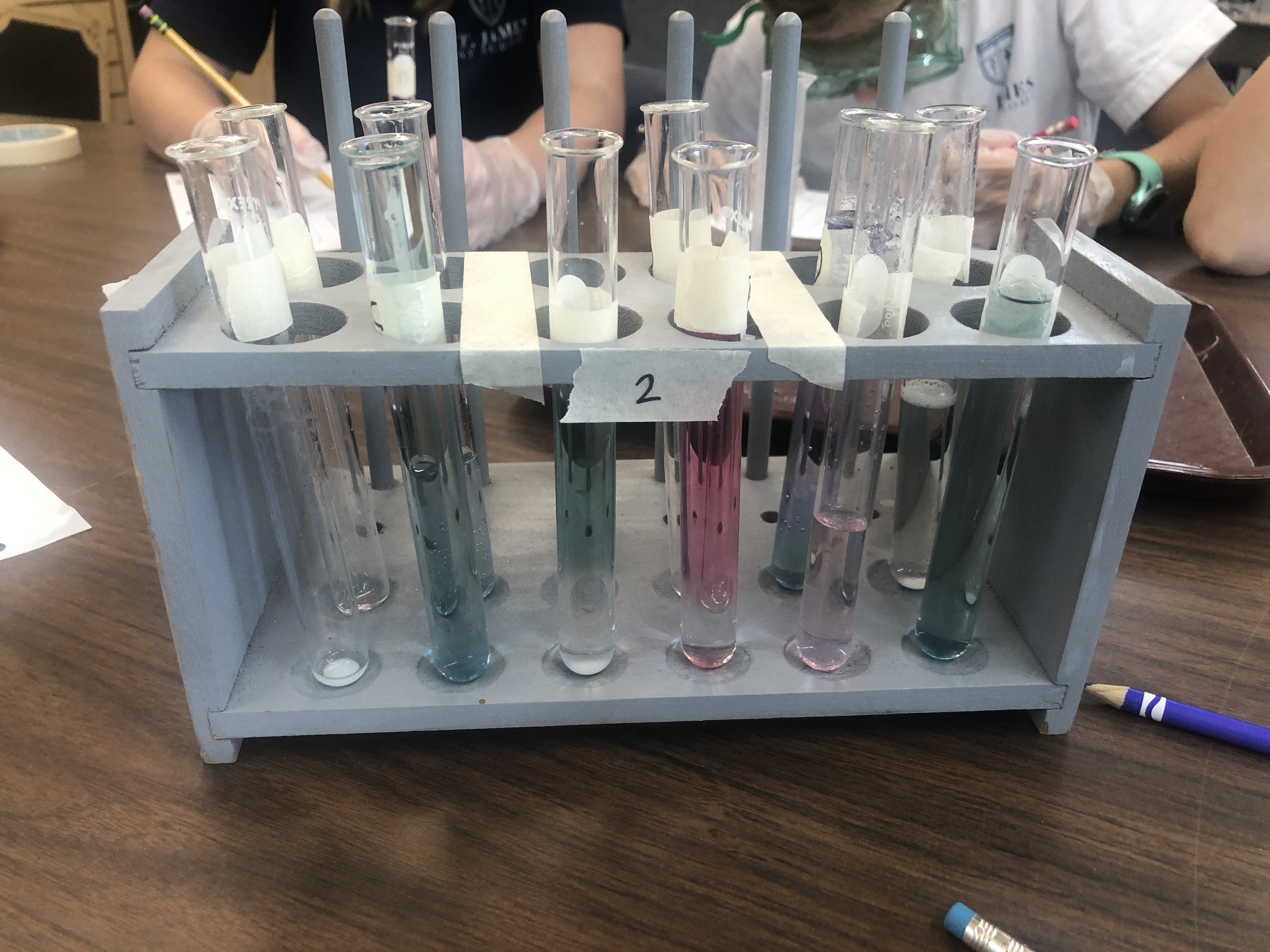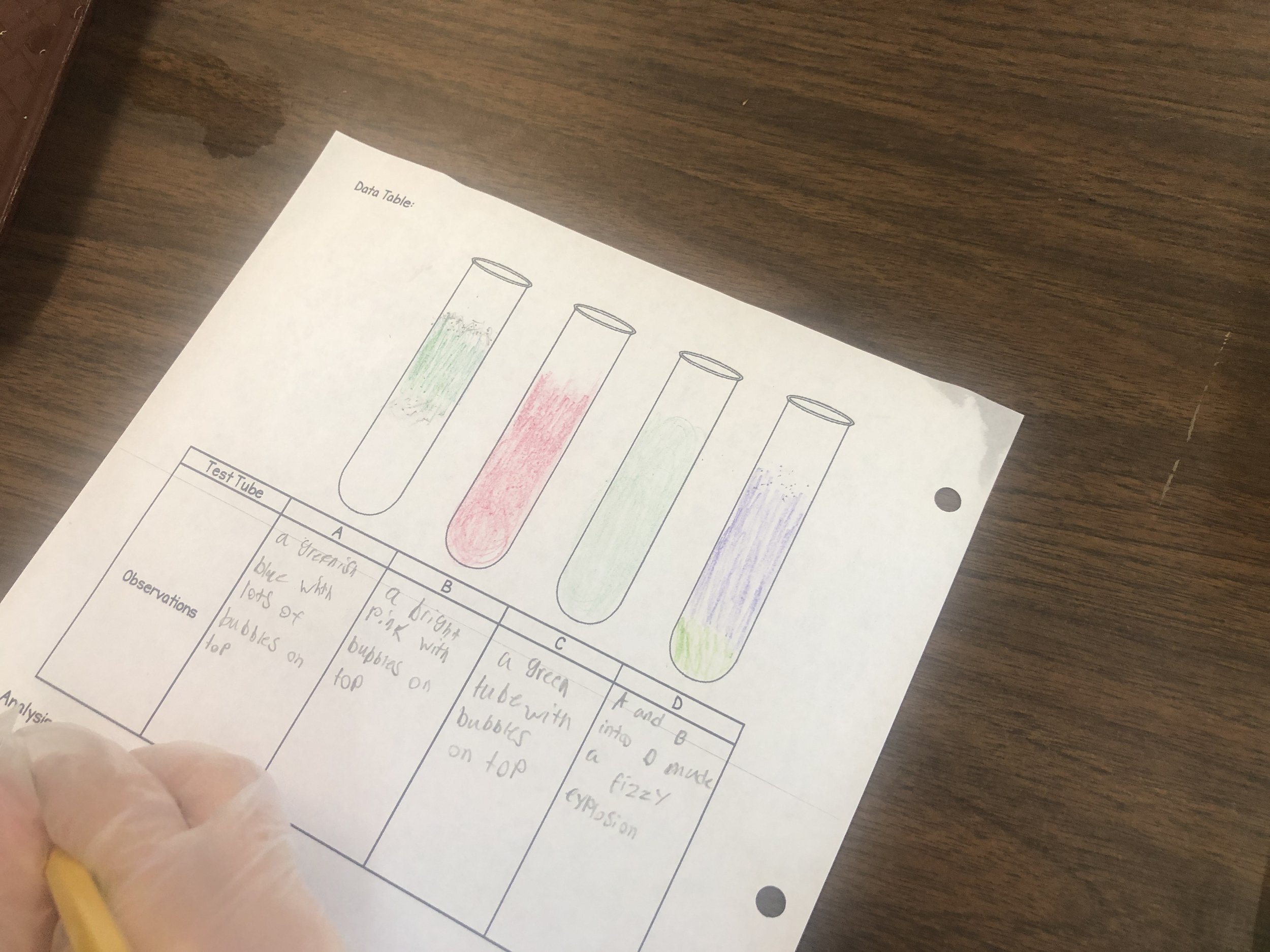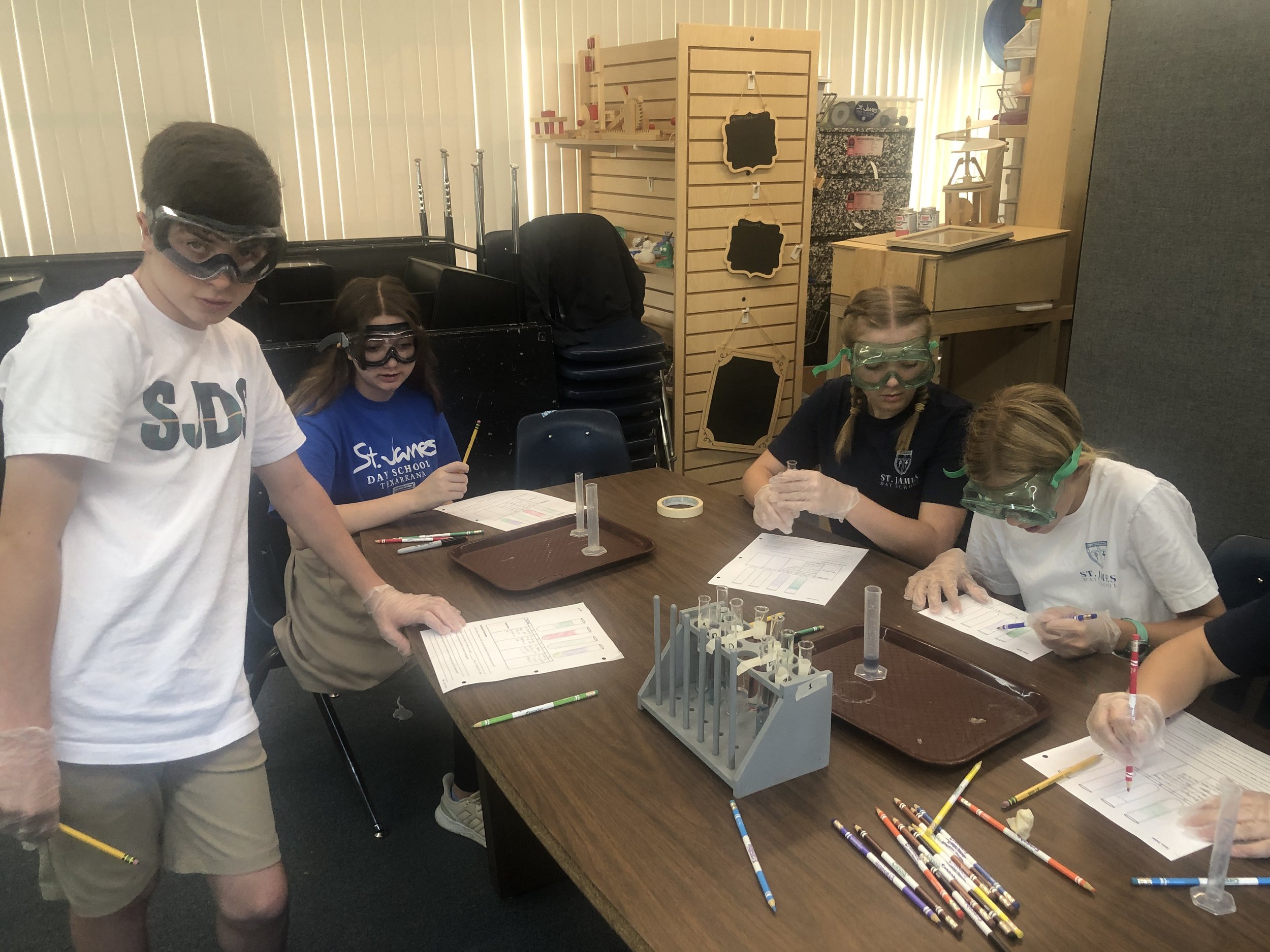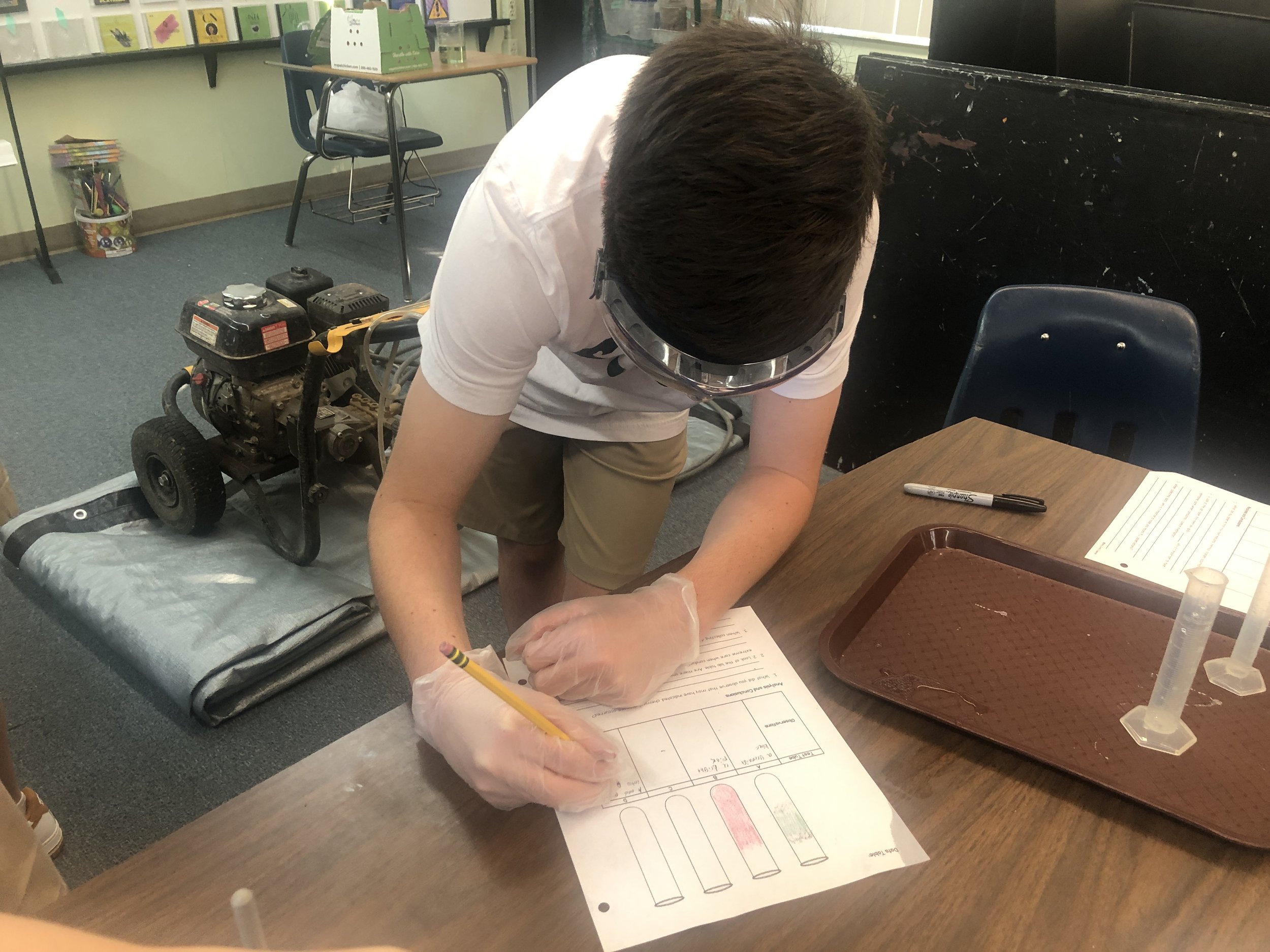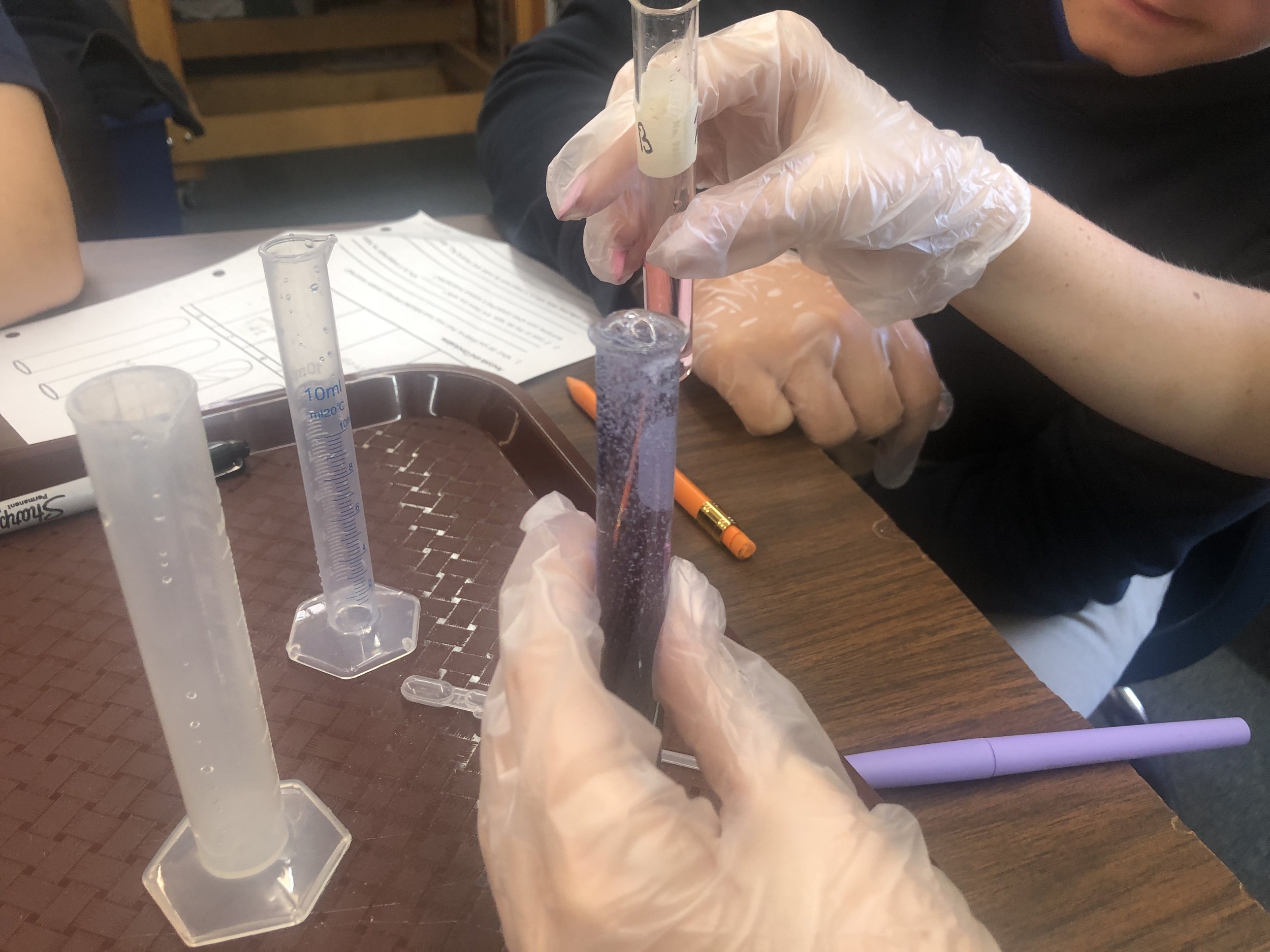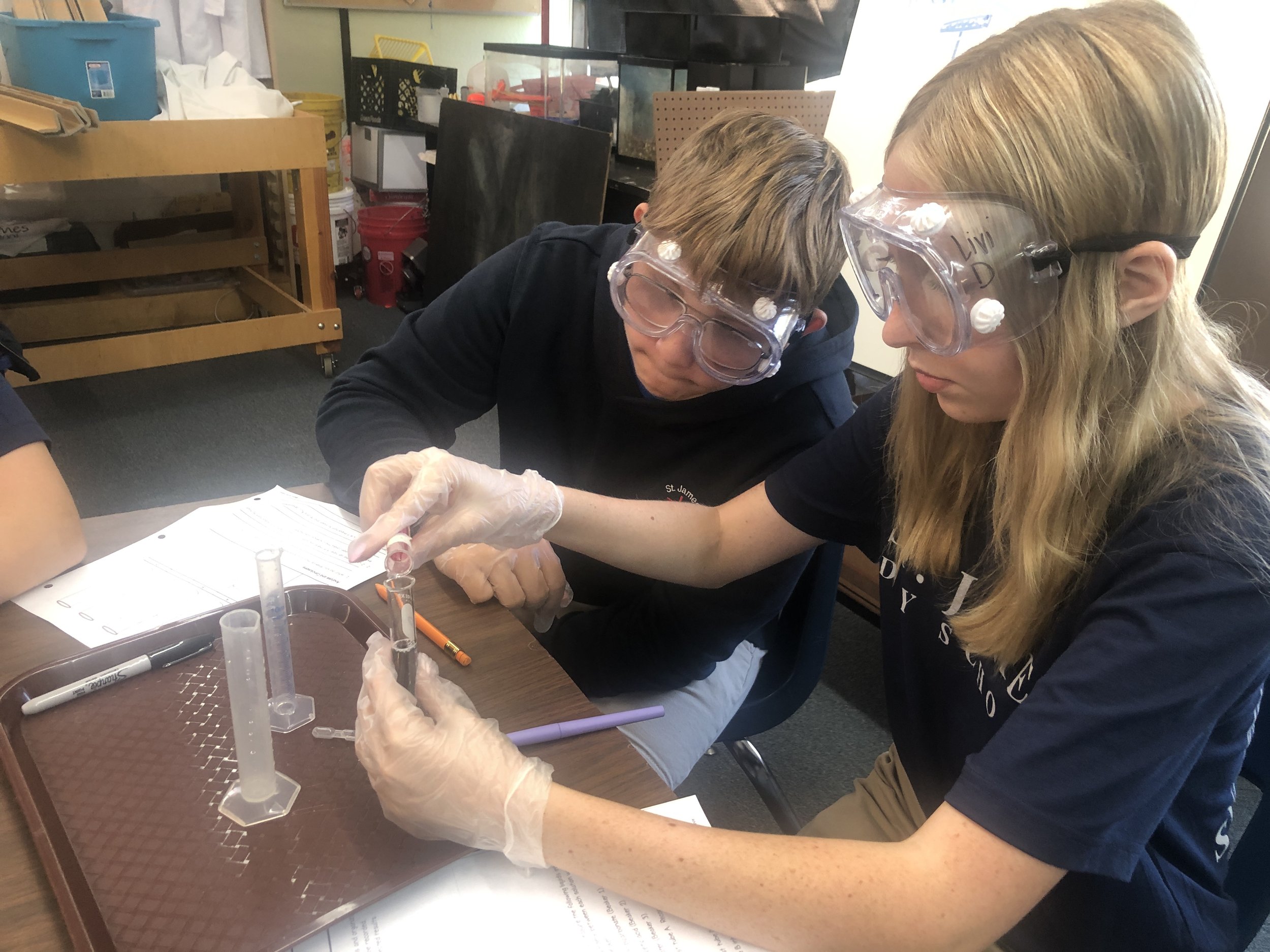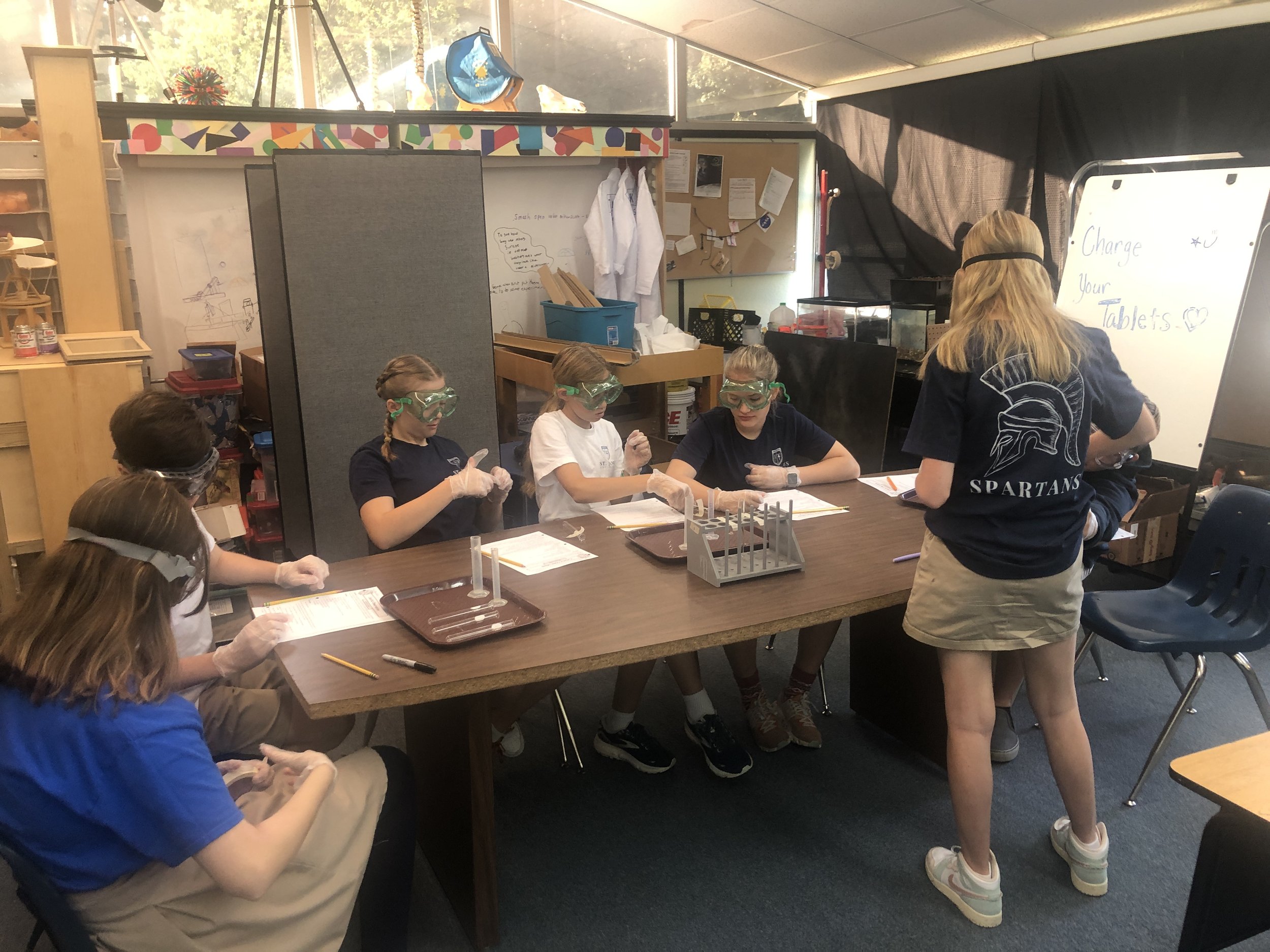Bernoulli’s Principle states that an increase in the speed of a fluid occurs simultaneously with a decrease in pressure. When applying this principle to the curved shape of an airplane wing, the velocity of air is greater above the wing than below the wing. Therefore, pressure is greater underneath the wing than above it, causing the wing to lift upward.
After learning about Bernoulli’s Principle in class, the eighth graders were posed with the challenge of creating a helicopter-style rotor (Twirly Bird) that could stay in the air for a long period of time. The materials they could use were limited to one pencil, one thumbtack, and one piece of cardstock paper. They were also provided with two templates they could use, but were not limited to, as they were also able to create their own templates. Once they created a design, each group performed three trials in which they launched their Twirly Birds from the same height and recorded how long they stayed in the air. From there, they could modify their designs as needed and test again. With their final creations ready to go, they were prepared for launch day. Each group performed three trials, with their longest times noted. Once complete, the winners were announced. We concluded this activity by studying each design and relating it back to Bernoulli’s Principle. Come to find out, our first place winners had created a design that was the most similar to the shape of an airplane wing. Go figure!
